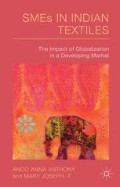Abstract
Though the Portuguese came to the Indian subcontinent for trade in pepper and other spices, they began to export silk products to Portugal. Indian textiles have the dubious distinction of being exchanged for slaves in the third decade of the 17th century, when a large number of wars necessitated slaves — on ships and as soldiers and artillery men. More and More (2008) have studied the interpolations of trade, commerce and political power in the Malabar region between the 16th and 17th centuries. Especially significant to the Portuguese and Dutch trade, Cannanore, as it was then called, was ruled by the Ali Rajas Muslims, who controlled the trade with foreigners.1
Access this chapter
Tax calculation will be finalised at checkout
Purchases are for personal use only
Preview
Unable to display preview. Download preview PDF.
Copyright information
© 2014 Anoo Anna Anthony and Mary Joseph. T
About this chapter
Cite this chapter
Anthony, A.A., Joseph, M.T. (2014). Kannur: History, Background and Trade Linkages. In: SMEs in Indian Textiles. Palgrave Macmillan, London. https://doi.org/10.1057/9781137444578_6
Download citation
DOI: https://doi.org/10.1057/9781137444578_6
Publisher Name: Palgrave Macmillan, London
Print ISBN: 978-1-349-68464-9
Online ISBN: 978-1-137-44457-8
eBook Packages: Palgrave Media & Culture CollectionLiterature, Cultural and Media Studies (R0)

